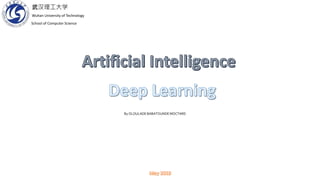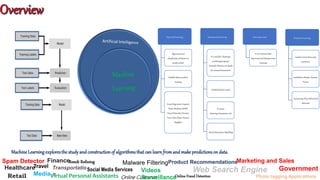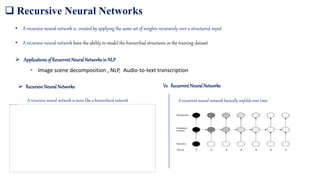This document provides an overview of artificial intelligence and machine learning techniques, including:
1. It defines artificial intelligence and lists some common applications such as gaming, natural language processing, and robotics.
2. It describes different machine learning algorithms like supervised learning, unsupervised learning, reinforced learning, and their applications in areas such as healthcare, finance, and retail.
3. It explains deep learning concepts such as neural networks, activation functions, loss functions, and architectures like convolutional neural networks and recurrent neural networks.












![Activation functions
Sigmoid function equation
https://cdn-images-1.medium.com/max/800/1*QHPXkxGmIyxn7mH4BtRJXQ.png
• Takes the given equation and a number then squash this number in the range of 0 and 1
Problems
Suffers from Vanishing gradient
problem
The gradient of the output of the network with respect to the
parameters in the early layers becomes very small
has a slow convergence rate
Due to this vanishing gradient problem sigmoid activation
function converges very slowly
is not a zero-centric function sigmoid function's output range is [0,1]
hyperbolictangent function (TanH)
Tanh activation function equation
https://cdn-images-1.medium.com/max/800/1*HJhu8BO7KxkjqRRMSaz0Gw.png
• This function squashes the input region in the range of [-1 to 1]
• its output is zero-centric
TanH also suffers from the vanishing gradient problem
Sigmoid](https://image.slidesharecdn.com/introductiontodeeplearning-190516020329/85/Deep-Learning-13-320.jpg)













